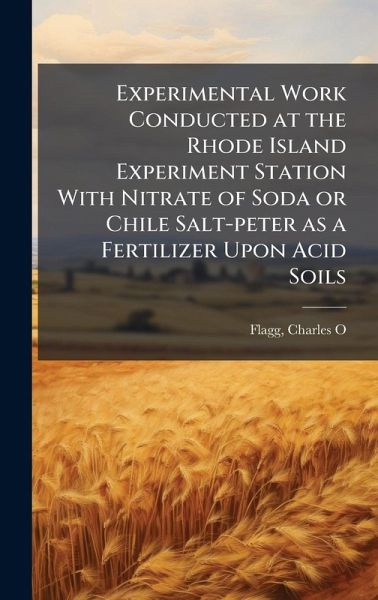
Experimental Work Conducted at the Rhode Island Experiment Station With Nitrate of Soda or Chile Salt-peter as a Fertilizer Upon Acid Soils
Versandkostenfrei!
Versandfertig in über 4 Wochen
28,99 €
inkl. MwSt.
Weitere Ausgaben:

PAYBACK Punkte
14 °P sammeln!
"Experimental Work Conducted at the Rhode Island Experiment Station With Nitrate of Soda or Chile Salt-peter as a Fertilizer Upon Acid Soils" details experiments conducted at the Rhode Island Experiment Station in the late 19th century. This historical document presents findings related to the use of nitrate of soda (Chile salt-peter) as a fertilizer, specifically addressing its effects on acid soils. The study provides insights into agricultural practices of the era and offers a valuable resource for those interested in the history of agricultural science and soil management. This report serv...
"Experimental Work Conducted at the Rhode Island Experiment Station With Nitrate of Soda or Chile Salt-peter as a Fertilizer Upon Acid Soils" details experiments conducted at the Rhode Island Experiment Station in the late 19th century. This historical document presents findings related to the use of nitrate of soda (Chile salt-peter) as a fertilizer, specifically addressing its effects on acid soils. The study provides insights into agricultural practices of the era and offers a valuable resource for those interested in the history of agricultural science and soil management. This report serves as a window into the early days of scientific agriculture and the quest to improve crop yields through innovative fertilization techniques. It is a must-read for agricultural historians and anyone keen to understand the evolution of farming practices. This work has been selected by scholars as being culturally important, and is part of the knowledge base of civilization as we know it. This work was reproduced from the original artifact, and remains as true to the original work as possible. Therefore, you will see the original copyright references, library stamps (as most of these works have been housed in our most important libraries around the world), and other notations in the work. This work is in the public domain in the United States of America, and possibly other nations. Within the United States, you may freely copy and distribute this work, as no entity (individual or corporate) has a copyright on the body of the work. As a reproduction of a historical artifact, this work may contain missing or blurred pages, poor pictures, errant marks, etc. Scholars believe, and we concur, that this work is important enough to be preserved, reproduced, and made generally available to the public. We appreciate your support of the preservation process, and thank you for being an important part of keeping this knowledge alive and relevant.


